- Home
- All Kinds of Palms
Different Kinds of Palm Trees
An excellent way to learn about different kinds of palm trees is to visit a botanical garden or arboretum that has palm plant collections. But meanwhile, we've got different kinds of palms to show you!
Palm trees are diverse, unique plants that are beloved by people around the world. We'll see what makes their special place in the world. Because there are over 2700 species of palms!
No matter your experience or interest in palms, there's always something new to discover about these fascinating plants. We've found those with assorted growth habits & adaptations to what your preference may be.
For those interested in adding palms to their own landscapes or indoor spaces, we'll show you the species that are well-suited for you. Or maybe you're just curious about all the different kinds of palm trees there are! And Their Unique Characteristics?
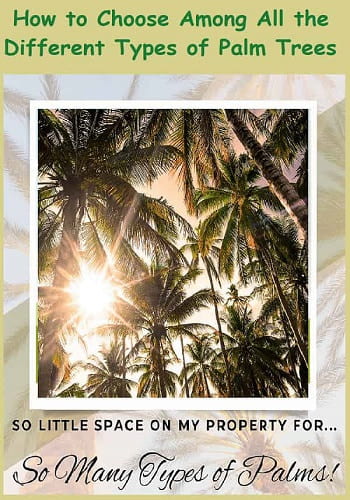
Feeling overwhelmed by so many palm trees?
You're not alone. We Understand your headaches! At Mission: Palm Trees you'll find clear answers to questions & Step-By-Step Guidance, from real people. With solutions to help. No puzzling shoptalk. No tiring research. So it's easy & fun for you.
All Kinds of Palm Trees
Choose which different kinds of palm trees you're interested in:
(OR scroll on down to see all the varieties! To begin learning How to Identify Palm Trees...)
Palm Trees for Full Sun
 Ahhhh - The Sun Shining Through the Palms. What a Life!!
Ahhhh - The Sun Shining Through the Palms. What a Life!!Do you live in a sunny climate, like the subtropics? Where the sun shines nearly every day.
Or do you live in a Desert Climate, like we do? Where Different Types of Palm Trees Grow.
Most palms love sunlight. Those below love full sun.
There are even More Outdoor Palm Plants for full sun.
FTC Disclosure: If you purchase via a link/ ad on this site, we may earn a small royalty. There's no added cost to you. Thanks much for any looks/ orders! Details>
Do you live in the tropics? It's so sunny there! South Florida is typical. For a wide variety of Types of Fan Palms or a Feather Palm Tree that's perfect for you.
 The Evening Independent Newspaper Free When it Rained in St. Petersburg FL
The Evening Independent Newspaper Free When it Rained in St. Petersburg FLIn 76 Years of the Promotion, Free Newspapers Were Given Out 296 Times!
Different Kinds of Palm Trees for Full Sun
The Coconut Palm
Cocos nucifera is about the most iconic of Fast Growing Palm Trees that love the sun. Tall (to 100ft/30m), slender trunk & Feathery Fronds. Grows quickly in ideal tropical landscapes (Zones 10b-11).
Those delicious Palm Fruits! Plus most parts of the Coconut Palm are useful.
Florida Thatch Palm
Thrinax radiata is native to the Caribbean and Florida Keys.
- Loves sandy soil, with thrifty water needs.
- Slowly grows to 50ft/15m, easily in Zones 10-11. Carefully in 9b.
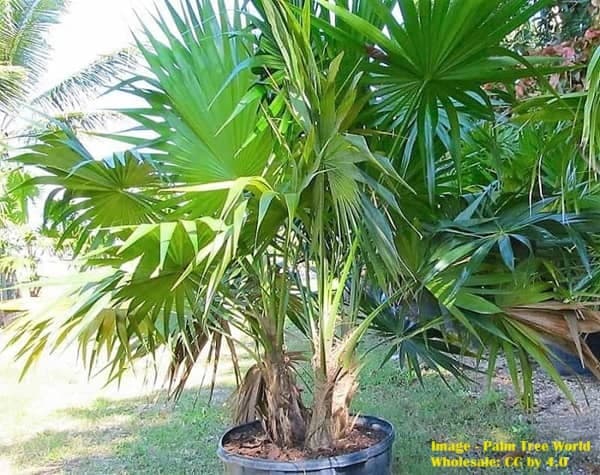 Ready for Your Outdoor Landscaping Plan
Ready for Your Outdoor Landscaping PlanQueen Palm
Syagrus romanzoffiana can grow to 90ft/27m with ideal watering - lots of it! Best for Zones 9-11 & 8b doable if carefully managed.
People in Tucson Arizona (Zone 9) plant Queens frequently. But they don't always stay healthy looking. 😟
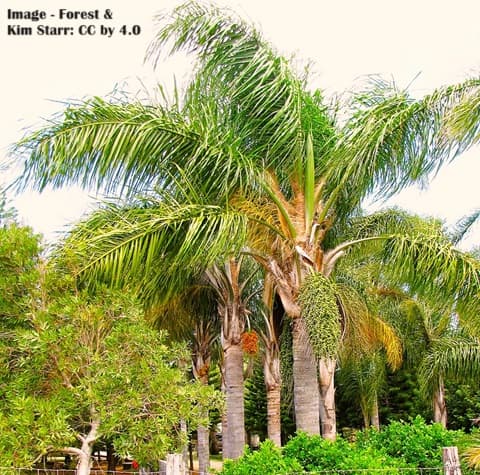 Beautiful Queens Growing Happily With Sun & Rain in Maui
Beautiful Queens Growing Happily With Sun & Rain in MauiSmall Types of Palm Trees
Pygmy Date Palm
Phoenix roebelenii, AKA Miniature Date Palm. Gets about 10ft/3m in Zones 8b-11.
- Full sun is best. Give extra water so it does well.
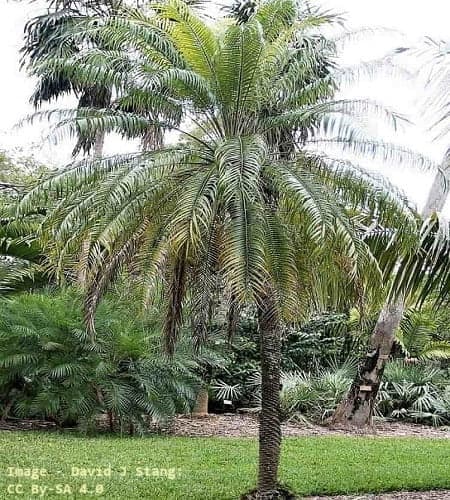 AKA Miniature Date Palm - Here About Full Height
AKA Miniature Date Palm - Here About Full HeightDwarf Palmetto
Sabal minor has plodding growth, reaching only 6ft/1.8m. Zones 6-11, even warmest 5b.
- Originated in swampy southeastern US areas. Has a very low trunk.
- Likes soppy roots & some shade! Makes a good ground-cover palm, if you can take the water bill!
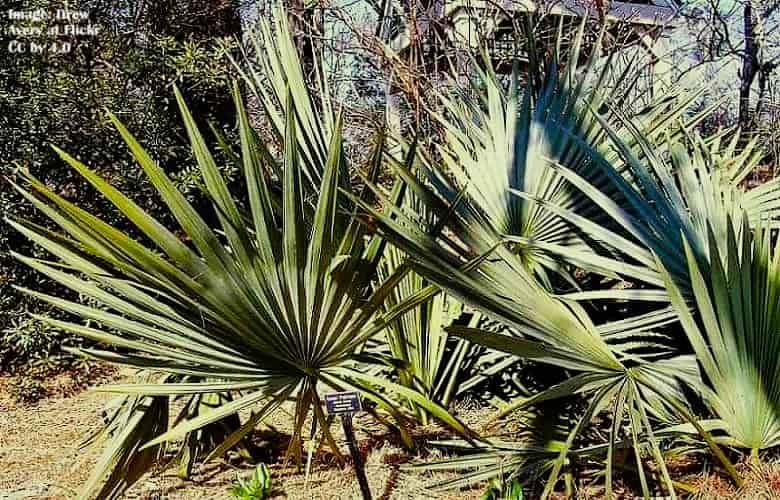 Another Nickname: Bush Palmetto
Another Nickname: Bush PalmettoNeedle Palm
Rhapidophyllum hystrix, also called Vegetable Porcupine, may be the most frost tolerant palm.
- Works well in Zones 6b-11 when given a bit more water than average.
- Maxes out at 12ft/4m.
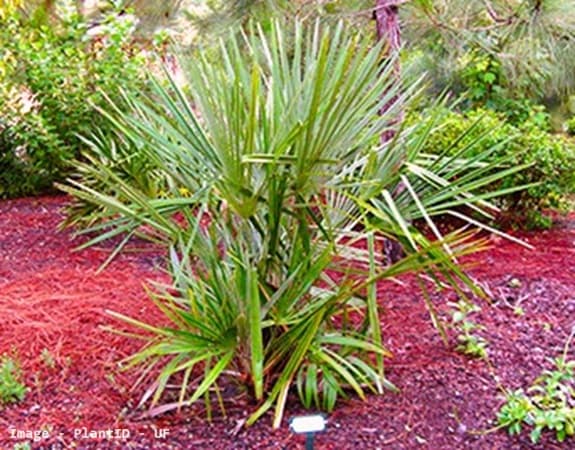 Nearly Hidden Needles Atop Each Growing Point in Its Clustering Style
Nearly Hidden Needles Atop Each Growing Point in Its Clustering StyleMedium Sized Palm Trees
Looking for different kinds of palm trees for Landscaping Ideas? Medium Size Palm Trees are ideal for smaller backyards. Those from over 20ft/6m to about 60ft/18m.
Barbados Silver Palm
Coccothrinax barbadensis is hardy in Zone 9b-11 sun-swept places.
- Ambles upward to 55ft/16.5m. Likes the coast!
- With low water needs.
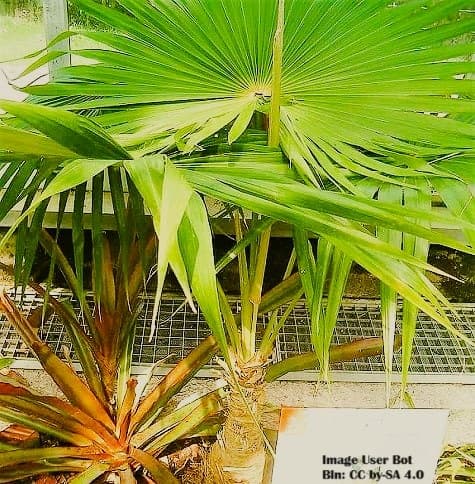 Beach Vacation in Barbados? You'll Meet This One!
Beach Vacation in Barbados? You'll Meet This One!Pindo Palm
Butia capitata is good in Zones 8-11 with watchful care.
- Gets to 35ft/10.5m.
- Edible fruit tastes sorta like pineapply banana.
- Average watering & gets through droughts.
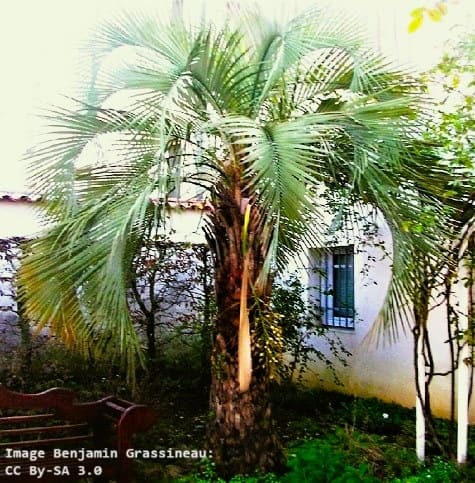 Also nicknamed Jelly Palm for its Sweet Fruit
Also nicknamed Jelly Palm for its Sweet FruitTeddy Bear Palm
Dypsis leptocheilos for Zones 10-11. Gorgeous, with its fuzzy brownish crownshaft.
- Medium watering schedule. Growing to 30ft/9m tall.
- Palms with crownshafts don't need pruning. Why is this Palm Tree Self-Cleaning?
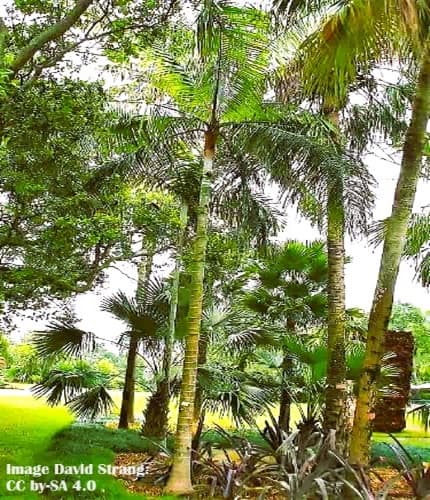 Fairchild Tropical Botanic Garden. AKA Redneck Palm
Fairchild Tropical Botanic Garden. AKA Redneck PalmFast Growing Palm Trees
You get a new palm planted in your yard or garden! Yay!! It's just a little tyke. Then you begin watching it grow. It's soooo slow!
Are you impatient to see that wonderful palm tree at a good height? We'll show you some that don't lag! Even see more different kinds of Palm Trees That Grow Quickly.
 Is It Growing Taller Yet??
Is It Growing Taller Yet??Foxtail Palm
Wodyetia bifurcata is an Aussie native. Featuring bushy fronds resembling fox tails.
- Grows fast up to 60ft/18m, after the seedling stage, in Zones 10-11.
- Looks best with ample watering.
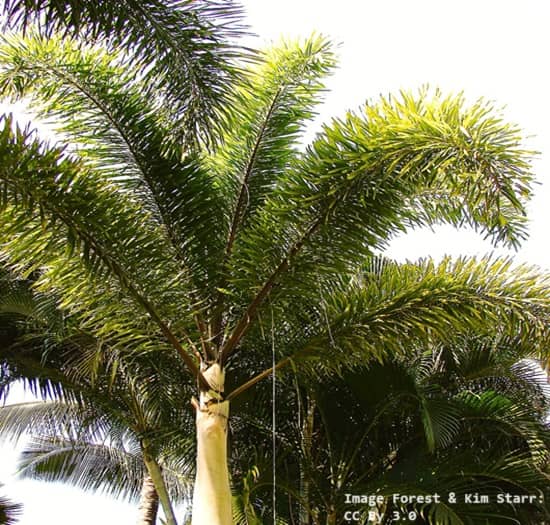 Might be the Fastest Growing Palm of All! Note its Crownshaft.
Might be the Fastest Growing Palm of All! Note its Crownshaft.Mexican Fan Palm
Washingtonia robusta for Zones 9-11. You'll recognize it being that Tall Palm Tree in LA.
- Loves sun & tolerates poor soil.
- Can get to 100ft/30m quickly, especially with extra watering.
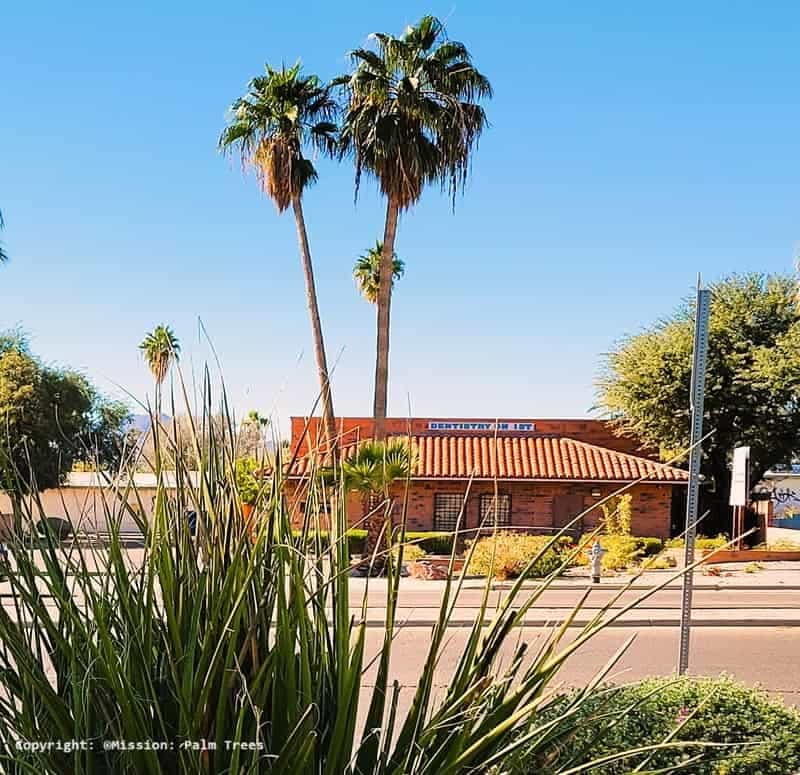 But It Tolerates Drought, as Seen Here in Tucson Arizona
But It Tolerates Drought, as Seen Here in Tucson ArizonaMajesty Palm
Ravenea rivularis AKA Majestic Palm. Gets to 50ft/15m.
- Give it lots of water & it grows fine in 10-11. Likes loamy soil.
- Some bring it indoors. If so, add humidifier & bright sunny window.
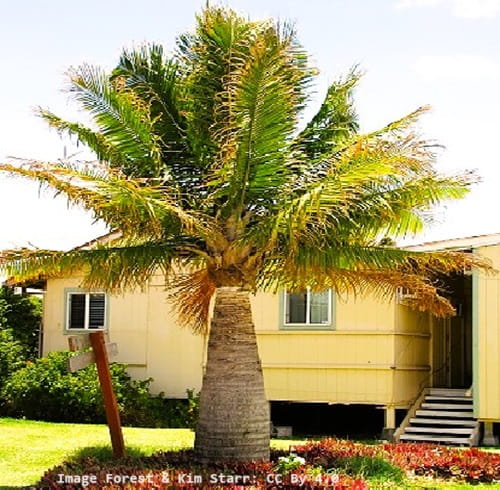 Distinctive swollen trunk & full crown. In Maui...
Distinctive swollen trunk & full crown. In Maui...There Really are Palms for Cold Weather!?
When lower temperatures rule for a short time, Cold Hardy Palms do fine. Suitable in USDA Hardiness Zones 5-8.
 In colder zones, protect them when temps dip. Get Out Your Palm's Winter Coats!!
In colder zones, protect them when temps dip. Get Out Your Palm's Winter Coats!!Hardy Bamboo Palm
Chamaedorea microspadix grows a bit faster, to 12ft/8m tall in Zones 8b-11.
- Doesn't want too much sun. Average Watering.
- Hardiness is for occasional frost. Had Cold Damage? It can revive.
See Even More Palms Tolerating Temp Dips>
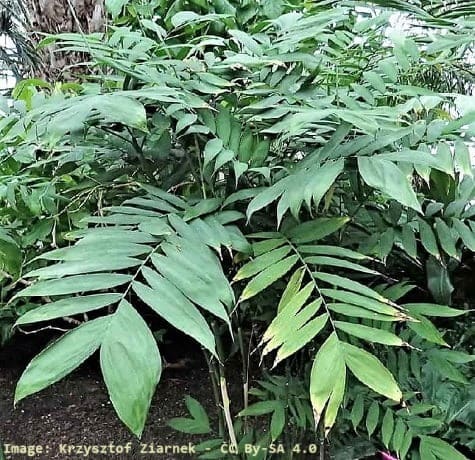 With Freezing Temps Please Give It an Overcoat!
With Freezing Temps Please Give It an Overcoat!Mazari Palm
Nannorrhops ritchiana can do Zones 7-11.
- Gradually getting to about 20ft/6m high.
- Needs full sun, but low water needs.
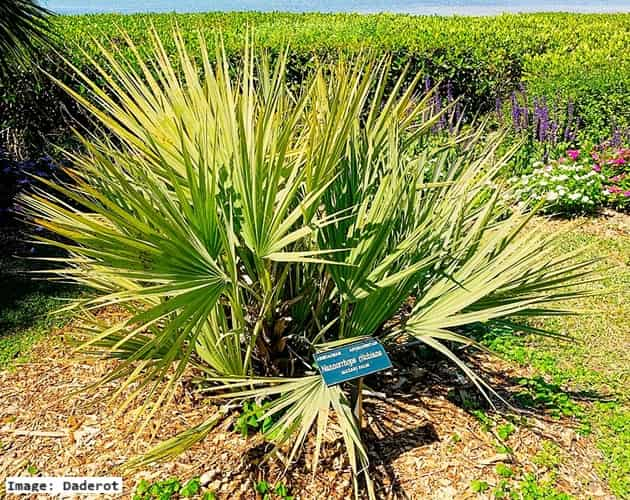 Mazari Palm Clusters Outward 15ft/4.5m - Nice as Hedging
Mazari Palm Clusters Outward 15ft/4.5m - Nice as HedgingRadicalis Palm
Chamaedorea radicalis grows slowly but steadily. Reaching 5-15ft/1.5-4.5m tall. Zones 8B-11. 8a is possible with protection. Tolerating short temp dips to 20F/-6.7C
- Prefers some shade, with average watering.
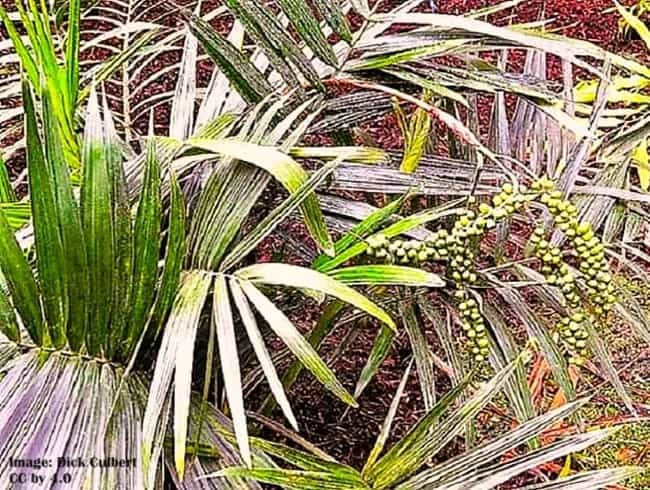 Those fruits can be irritating! Growing in Lotusland's Gardens in California.
Those fruits can be irritating! Growing in Lotusland's Gardens in California.Best Palm Tree for Shade Areas in a Landscape
A Palm's Native Area forms its preferences. Even though all palms like some sun, these palms are A-OK with shade.
Chinese Fan Palm
Livistona chinensis likes a little shade. Good for Zones 8b-11.
- It gets somewhat tall: 50ft/15m.
- Easily Grown From Seed on your own.
 Grand Full Crown With Fronds That Swoop Downward
Grand Full Crown With Fronds That Swoop DownwardBamboo Palm
Chamaedorea seifrizii is also called Reed Palm. Many grow this indoors.
- Only 12ft/4m tall, with a hiding crownshaft from its dense frond clusters.
- Some shade is doable. 9-11 zones, with frost survival.
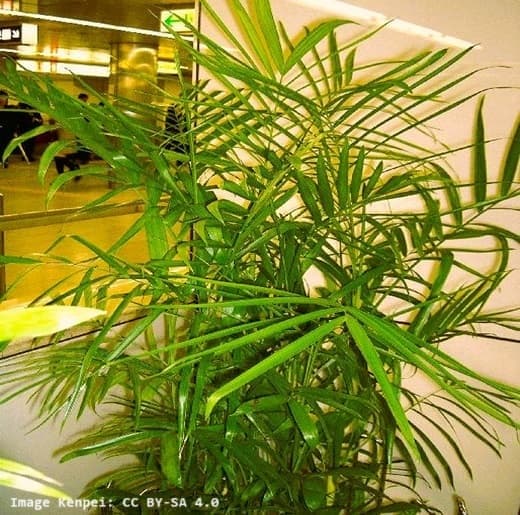
Impressive Types of Outdoor Palm Trees
Outdoor palms can have enough room to be impressive, for sure. We'll show you a couple right here. But we have Lots More Outdoor Palms to See - Sorted by various categories.
Bismarck Palm
Bismarckia nobilis works well in Zones 9a-11.
- Averages 60ft/18m maximum height. Quicker growth past seedling stage.
- Preplan location! Its large, wide canopy is extraordinary.
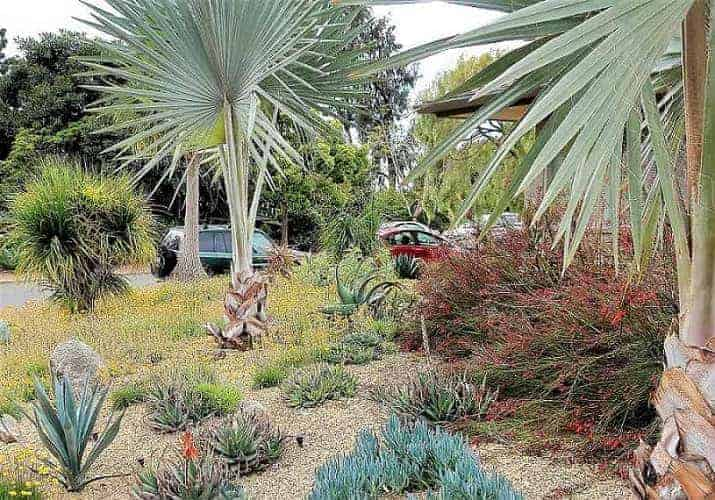 Bismarcks Along the Mission Hills Garden Walk in San Diego California
Bismarcks Along the Mission Hills Garden Walk in San Diego CaliforniaCabbage Palm
Sabal palmetto, slow-growing but stunning in 7b-11 zones.
- Average water, with more it grows faster.
- To 90ft/27m tall.
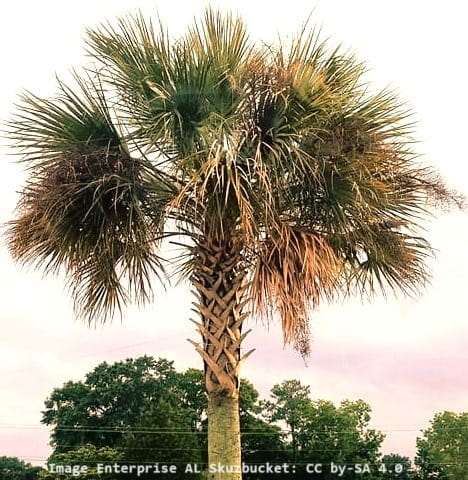
Types of Indoor Palm Trees
Different kinds of palm trees grow well inside your home. Near to a window for needed light. If you're new to growing Palm Trees Indoors, try starting with a species having easy care.
The Kentia Palm (Howea fosteriana) is the one! A perfect indoor palm with arching fronds. Tolerant of neglect!
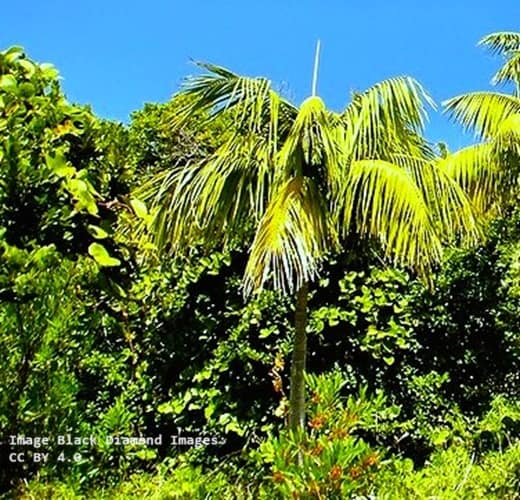 Looks Great Outdoors - Yet Stunning When Potted for Indoors
Looks Great Outdoors - Yet Stunning When Potted for IndoorsChristmas Palm
Adonidia merrillii is a popular potted palm tree for indoor holiday decor. Year round it's fine, too.
- Produces inflorescences quickly, with colorful red fruit.
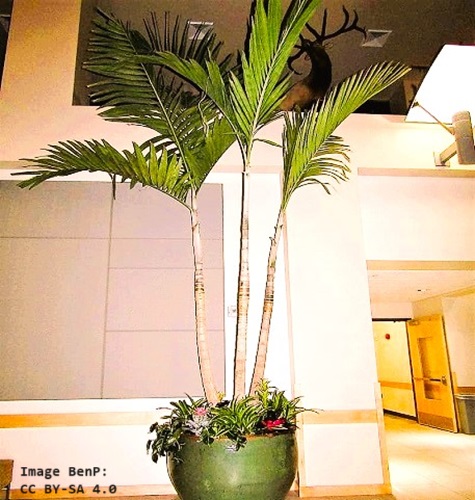
Best Palm Trees for Privacy and Screening
Clustering palm trees send out suckers from the "parent" trunk. Forming new stems for a bushy appearance. Useful as a hedge.
Ivory Cane Palm
Pinanga coronata progresses well to 25ft/7.5m. Zones 10B-11, if treated to rainforest-like setting.
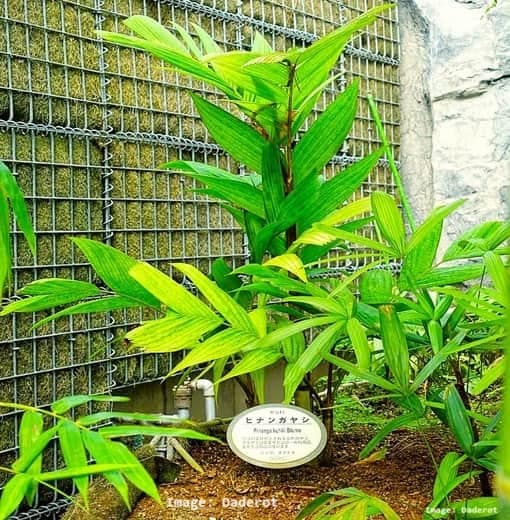 Specimen in a Tokyo Greenhouse
Specimen in a Tokyo GreenhouseSenegal Date Palm
Phoenix reclinata, good in Zones 9-11.
- Grows somewhat faster to about 60ft/18m
- Looks better with extra water.
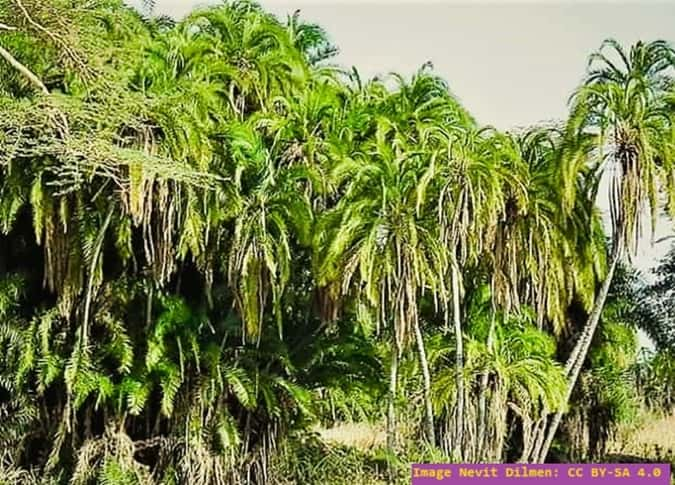 Senegal Date Palm spreading cluster style, good for privacy.
Senegal Date Palm spreading cluster style, good for privacy.Everglades Palm
Acoelorhaphe wrightii clusters nicely.
- Hardy in Zones 9b-11. Needs room to spread.
- Likes wet grounds. Slowly but surely grows to 40ft/12m.
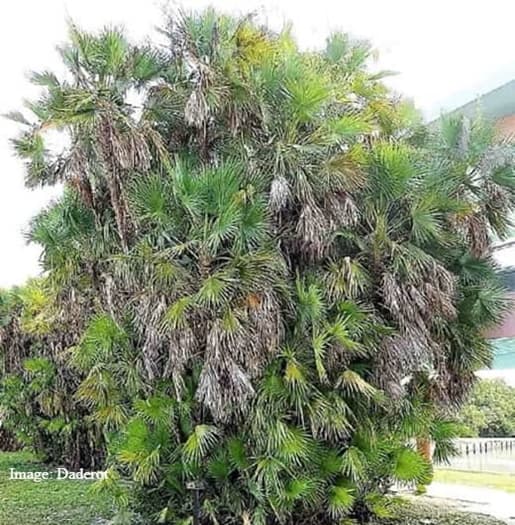 Also Called Paurotis Palm. Note its dense growth.
Also Called Paurotis Palm. Note its dense growth.This one is growing in Everglades National Park
Some Palms are Clinging to Life!
Many palm species are endangered from habitat loss, over-collecting, and human activities.
The Malayan Tiger Palm (Johannesteijsmannia altifrons) is another endangered palm that is native to the rainforests of Southeast Asia and is threatened by deforestation and illegal logging. The Huntington Conservatory has a Great Specimen.
Hyophorbe amaricaulis - Called the Loneliest Palm. Needs protection as it's the only one!
Dypsis decaryi - Nicknamed Triangle Palm. Threatened by overcollection for ornamental landscaping.
Nypa fruticans - Called Mangrove Palm. From coastal areas of the Indo-Pacific.
Pseudophoenix ekmanii, aka Ekman's Palm, doesn't grow easily. Endangered from habitat loss & overcollection.
Ongoing efforts to protect them are in place. But they need palm lovers' help. Why not support a palm nonprofit, like the International Palm Society.
 In Curepipe In CurepipeBotanical Garden Mauritius |
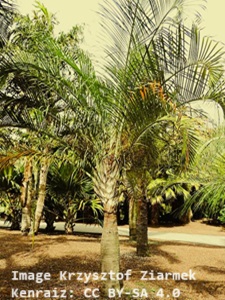 Dypsis decaryi fronds form a triangular shape. Native to Madagascar. Dypsis decaryi fronds form a triangular shape. Native to Madagascar. |
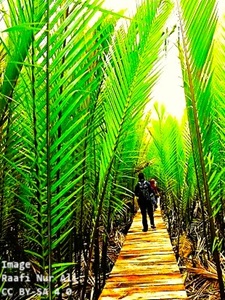 Nypa fruticans threatened by coastal development & pollution. Nypa fruticans threatened by coastal development & pollution. |
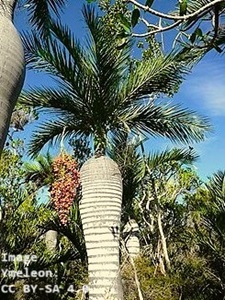 Ekman's Palm is native to Hispaniola. Such a unique trunk! Ekman's Palm is native to Hispaniola. Such a unique trunk! |
Takeaways for Different Kinds of Palm Trees
There is always Something New With Different Kinds of Palm Trees. Seems to be a palm for nearly any category you're thinking of!
We hope you find the one for you here. If not, you can always Ask Us About Others>




